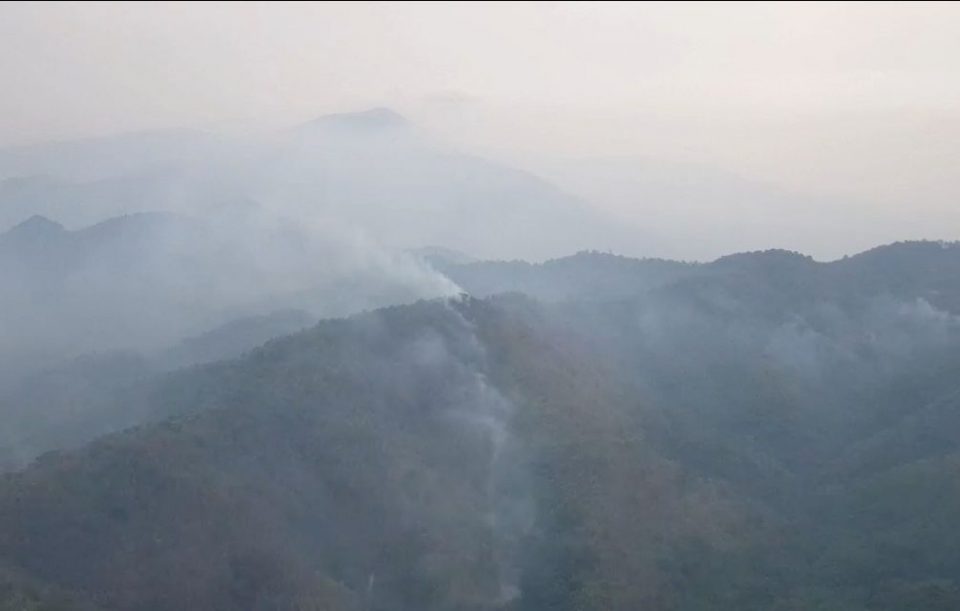Polluted air levels dropped in Chaing Mai province on Thursday thanks to some rainfall and strong winds.
Chiang Mai Natural Resource and Environment Office director Saratcha Suriyakul Na Ayudhaya also said public, private and other sectors contributed to the drop by spraying water and cleaning road surfaces.
However, many areas of Chiang Mai still reported high levels of haze – ranking 63-90 micrograms per cubic metre of air, according to the Pollution Control Department (PCD)at 9am.
The PCD reported the average 24-hour amount of PM2.5 – airborne particulates 2.5 microns or less in diameter – in nine northern provinces ranged from 30 mcg-171 mcg, with tambon Jong Kham in Muang Mae Hong Son having 171 mcg, tambon Wiang Phang Kham in Chiang Rai’s Mae Sai district having 118 mcg and tambon Chang Pheuk in Muang Chaing Mai having 90 mcg).
Chiang Mai also lost the title as the world’s most polluted city on airvisual.com. As of 11am, Chiang Mai was in the 5th place with an air quality index (AQI) of 165, following Delhi (230), Lahore (190), Shanghai (184) and Denpasar (175).
The haze issue in Chiang Mai was largely due to multiple forest fires – a total of 31 hot spots reported as of 1.30am most of which were in conserved forestland in Chaing Dao and Fang districts, Saratcha said.
He said that, from January 1 until March 26, Chiang Mai had a total of 934 hot spots – 461 of which occurred in conserved forestland. The authority imposed an outdoor burning ban from March 1 through April 30 and has so far arrested nine violators most of whom were poachers looking for forest products.
Saratcha said that the authority also would launch a campaign to instil among small children the negative impact of people lighting fire in forest, which resulted in health-affecting haze.
In Phayao’s Mae Chai district, Mae Puem National Park’s participation promoting division head Pathom Meesap revealed that his team had a key mission to fight forest fire that had ravaged areas in Chiang Rai and Phayao in the past month.
Many forest firefighters developed health issues with rashes, skin and eye irritation and were deprived of sleep, having a total of eight hours of sleep in three days, he said.
Pathom also noted that, as many northern villagers believed that delicious forest products like “Hed Thob” hygroscopic earthstar (Astraeus hygrometricus) were best grown in a heated environment and were more visible and easy to collect. Some people resorted to speed up the process by lighting fires which often went out of control.
Most cases of forest fires in his jurisdiction area stemmed from poachers using a “homemade timer” – a bunch of lit joss sticks, tied up with some matchsticks near the joss stick handles, at multiple target spots, he said.
This method let the wrongdoers escape arrest and remain unknown, as they would go home right after placing the bunches and would return for the forest products days later.





